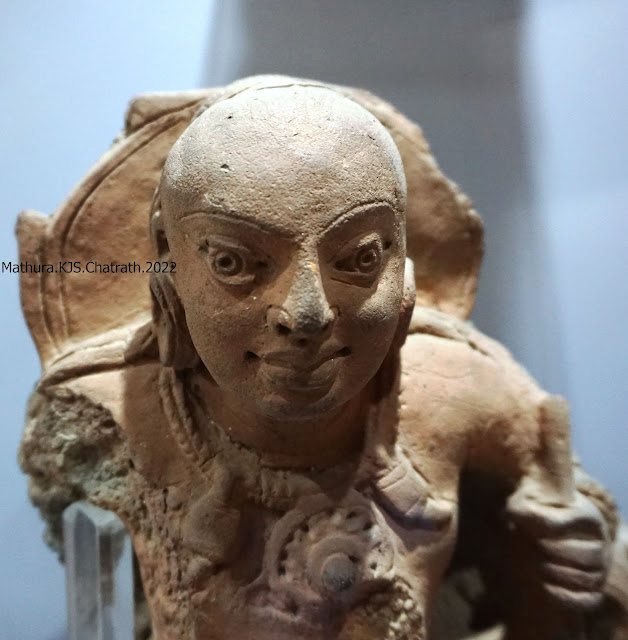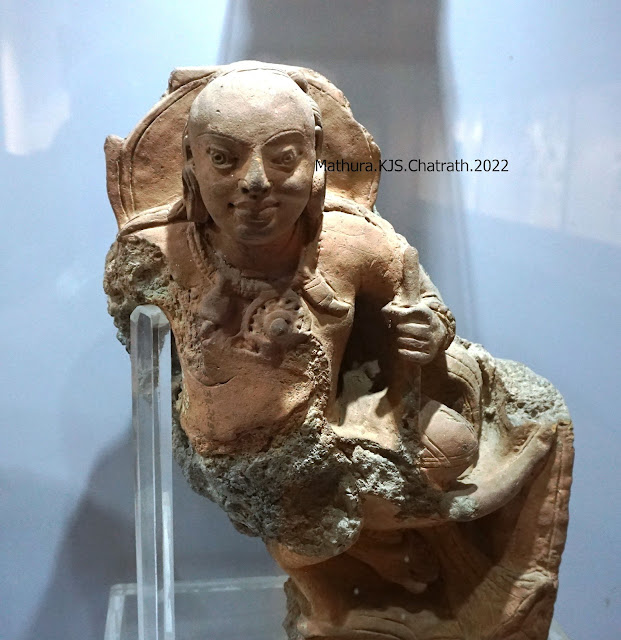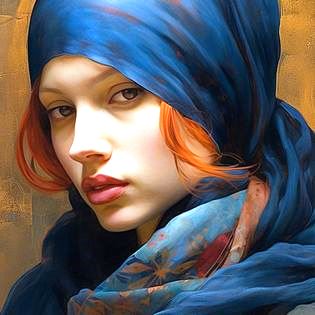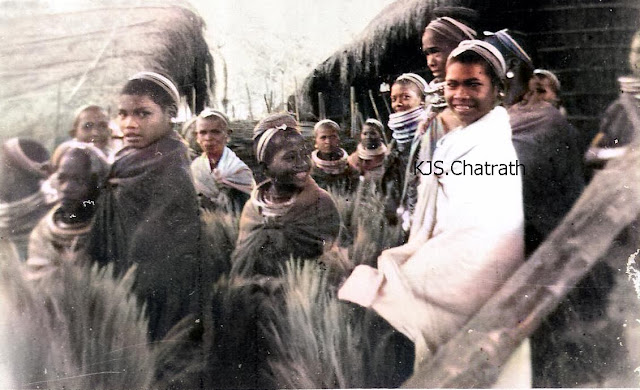'Mathura Government Museum & Mathura School of Art' shared by K J S Chatrath
This is a terracotta image from Gupta Period (4th-6th AD) on display in the Mathura Museum.
I visited Mathura Government Museum two days back. It was a very rewarding experience. I took Taj Express from New Delhi Railway station at 06.55 am and was at Mathura Junction at 08.40. Took a pedal rickshaw and reached the Braj Wasi restaurant for a poori-aloo breakfast. More about that in a seperate photo article.
I was at the Museum at @10.30 am, the hour of its opening. It opened punctually. The staff were very courteous and helpful. Moving through various galleries I noticed that fans had not been switched on making the experience tough.
Renowned as the birth place of Lord Krishna, the 7th Jain Tirthankara Suparvanatha and a place visited by the Buddha, Mathur attained a holy stature in Brahamanism, Jainism and Buddhism even before the dawn of Christian era. The prosperity and glory of this ancient metropolis of northern Indi attracted a large number of visitors from distant quarters and also invaders from foreign lands.
The archeology of this region, therefore narrates the story of repeated construction and destruction. While the artisans practiced the plastic craftsmanship at least from the 3rd century B.C., there developed an independ3ent style of art known as the Mathura School of sculpture flourishing from 1st century AD to 6th century AD and producing several pride pieces of Indian art.
The Mathura style is known for the following characteristics:-
Use of spotted red sandstone; continuance of early art traditions of Central India (particularly of Bharut); Fusion of the primitive Yaksha cult with pantheon of other sects; Replacement of symbols by anthropomorphic form; Assimilation of foreign elements; development of new art forms; Introduction of portrait figures and exposition of feminine beauty with great delicacy and charm.
This Museum was founded
in 1874 by F.S.Growse, the Collector of the district, in a small building, the
Museum was shifted to its present premises in 1930. The galleries present the
glimpses of early Mathura or Braja culture through pottery, terracottas and
sculptures arranged in chronological sequence.Almost all the pieces on display are accompanied boards providing useful information.






Comments
Post a Comment